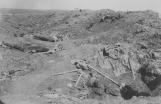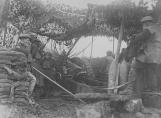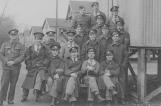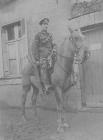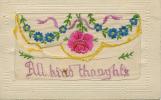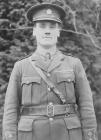62
Aside from his literary talents, he demonstrated ingenuity by improving the performance of the Lee-Enfield rifle as a grenade thrower. The German rifle grenade consistently out distanced the allied rifle grenades giving them an advantage in close combat. Johnston decided to shorten the barrel of the issued Lee-Enfield .303 rifle as he thought it was too long for grenade launching properly. Cutting it down to 11 inches doubled the range of the rifle grenade.This discovery impressed Lt. General Sir Julian Byng, the Canadian Corps Commander who was busy planning the attack on Vimy Ridge, that soon every rifle grenade section had shortened their barrels.
Under Johnston's command and after two months of intense preparations, the 2nd CMRs took three lines of trenches and secured the centre of the Corp's objective in only 30 minutes on the morning of April 9, 1917. The ground taken by the regiment is just south of the location of the Vimy Memorial that stands upon the Ridge today.
63
When duties allowed, soldiers from BC participated in the provincial election of 1916.1916
Somewhere in France
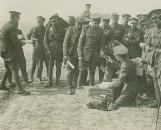
67
The battle honours won by the regiment in the First World War were emblazoned on the Rgimental Colours and included: Mount Sorrel, Fler-Coucelette, Arras 1917-1918, Hill 70, Passchendeale, Scarpe 1918, Cana du Nord, Somme 1916, Ancre Heights, Vimy 1917, Ypres 1917, Amiens, Cambrai 1918, Pursuit to Mons, and France and Flanders 1915-1918. The price in blood for these honours was high.As casualties mounted, reinforcements from other parts of Western Canada and Ontario filled the gaps left by the dead and wounded. Still, the major element in the unit was British Columbian. More than 4,500 men served in the 2nd CMRs during the Great War. Of those, 732 were killed and 2,276 were wounded. Seven became Prisoners of War. This makes a total causalty rate of 67%.
Two members won the Victoria Cross, the highest decoration for Bravery in the British Empire. Major G. R. Pearkes won one while serving with the 5th CMRs in Passchendeale and Capt. J. "Jock" MacGregor won his at Nueville-Remy in 1918. In all, the men of the 2nd CMRs received 278 decorations by war's end. Following Armistice, the regiment returned to England and in March 1919 arrived in Victoria where they received a deservedly triumphant welcome home.

